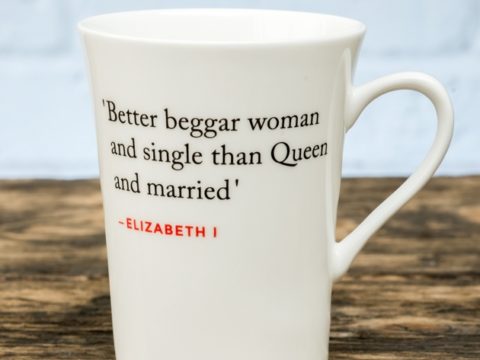A Royal Scandal
Chapter 2 : Marriage Plans
On the day of the old King's funeral, Edward Seymour created himself Duke of Somerset. Possibly to compensate his brother Thomas for being excluded from the regency Council, he elevated him to the peerage as Baron Seymour of Sudeley Castle and confirmed him in his post as Lord High Admiral for life.
Lord Seymour was then about forty years old, good looking, charming, and very popular. His contemporary and Edward VI's biographer, Sir John Hayward, described him as 'fierce in courage, courtly in fashion, in personage stately and in voice magnificent' - but 'somewhat empty in matter'.
Henry VIII's sixth wife, Katherine Parr, had fallen for Seymour's looks and dashing personality before her marriage to the King, and she and Seymour had discussed marriage at that time. But Henry put paid to that, and during her years as queen Katherine seems resolutely to have put Seymour out of her mind.
Seymour found it galling to be denied what he considered to be his rightful place on the regency Council; he was the King's uncle; he had also served his country both as a diplomat and on the high seas, and he was determined to secure a place on the Council and ultimately supplant his brother, of whom he was deeply jealous. To do that, he needed power and he needed money, and the best way to gain both was by an influential marriage.
He did not immediately renew his suit to Katherine Parr: she was, after all, only the late King's widow, and completely lacking in influence in a court from which she was about to depart. Real power would come with a marriage to one of the King's sisters, who had both been restored to the line of succession; such a move might, in time, bring Seymour a crown.
The elder of the two, the Lady Mary, was a staunch Catholic, so he passed her over. That left the thirteen-year-old Lady Elizabeth, twenty-seven years his junior. She had a proud and disdainful manner which sometimes eclipsed the beauty of her red-gold hair and the flashing eyes she had inherited from her mother, yet she also had Anne Boleyn's capacity for flirtation and her attraction for men, and the Admiral thought her eminently desirable. In February 1547 he began courting her, declaring his affection in flattering letters, and begging to know:
whether I am to be the most happy or the most miserable of men
Elizabeth did not reply at once, having a shrewd idea of what lay behind Seymour's letters. All the same, it was flattering for a young girl to be the object of attention from such a handsome and sought-after man. Yet Elizabeth was not just any young girl; she was a king's daughter, second in the line of succession to the throne, and she had to have the Council's permission if she wished to marry. It was unlikely to be granted in this case.
Wisely she turned down Seymour's proposal, saying that 'neither my age nor my inclination allows me to think of marriage', and that she needed at least two years to get over the loss of her father before contemplating it. But she added: 'Permit me, my Lord Admiral, to tell you frankly that, though I decline the happiness of becoming your wife, I shall never cease to interest myself in all that can crown your merit with glory, and shall ever feel the greatest pleasure in being your servant and good friend.'
Seymour now turned his attentions once more to Katherine Parr, who was still strongly attracted to him. Their courtship had, of necessity, to be conducted in secret in case the Council found out and forbade its continuance. Katherine was officially mourning Henry VIII, and could not with honour contemplate remarriage in the near future, yet so happy was she at this latest turn of events that when, that March, Seymour proposed marriage, she gladly accepted. She insisted that a suitable period of mourning must elapse before the wedding could take place, but he overruled her, urging her to marry him in secret at once.
And at that, sensible, virtuous, Katherine Parr seized what she saw as her last chance of love and happiness; she was not, at nearly thirty-five, so young that she could afford to waste time. Seymour was delighted; if he could not aspire to a crown, he would at least be rich, and – as the husband of the first lady at court - accorded precedence over nearly everyone else.
But it was unlikely that the Council would approve of his marriage to the Dowager Queen. Henry VIII had been dead for only six weeks. So Seymour covertly asked permission of the young King, who did not hesitate to signify his approval and consent, being fond of both his stepmother and his uncle.






